The Apollo 11 spacecraft conquer the Moon exactly 53 years ago:You knew how the moon smelled , or how activists reacting to the launch ended up sitting in VIP seats ?
The diary read, like today , July 20, 1969 :It was a small day of the year for man, but a long one for mankind... Something like that!
Neil Armstrong , wearing the shield against the arrows of hostile space, stepped into a foreign and inhospitable place, said what he was written to say, nailed the flag of pantanassa America on the moon and theHistory wrote:“The first man on the Moon ».
At the same time, in Italy , six Baripoinites, who didn't care at all about the moon, escaped by taking advantage of the prison guards' fixation in front of the television... And the prison guards were not the only ones who had been captivated by the unique sight of man's walk on the Earth's satellite... It is estimated that 650 million people upon Earth (and one out of it, Michael Collins, who never set foot on the moon) - in the late 1960s - they watched two men saunter onto the moon!
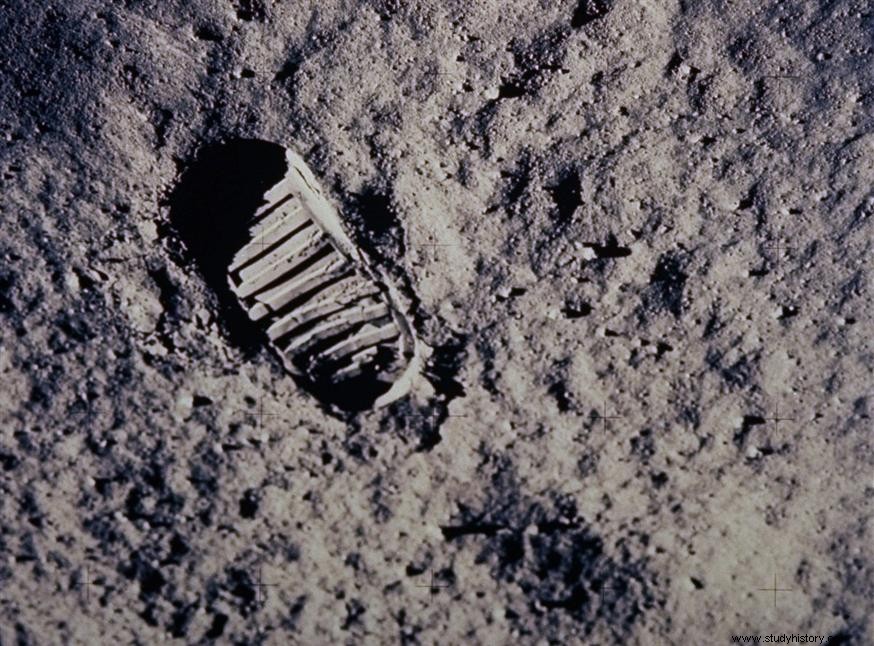 1. The Moon smelled like an extinguished fireplace
1. The Moon smelled like an extinguished fireplace
And yet it is true! The Moon had a smell ! When Armstrong and Aldrin set foot on the moon, they weren't sure what kind of terrain they were going to land on. They eventually turned out to be as solid as granite rock, and the two astronauts quickly collected rock samples to analyze. As they walked, an odor "drenched" their suits that brought her back to the spaceship.
When they took out their space helmets, the astronauts realized that the smell of the moon was special:it gave off a smell similar to the ashes left in the fireplace or like the air after an explosion of fireworks. In short, it smelled of burnt gunpowder . Unfortunately, scientists on Earth never had the chance to...smell from the Moon, since by the time the rocks reached the labs they had lost their smell.
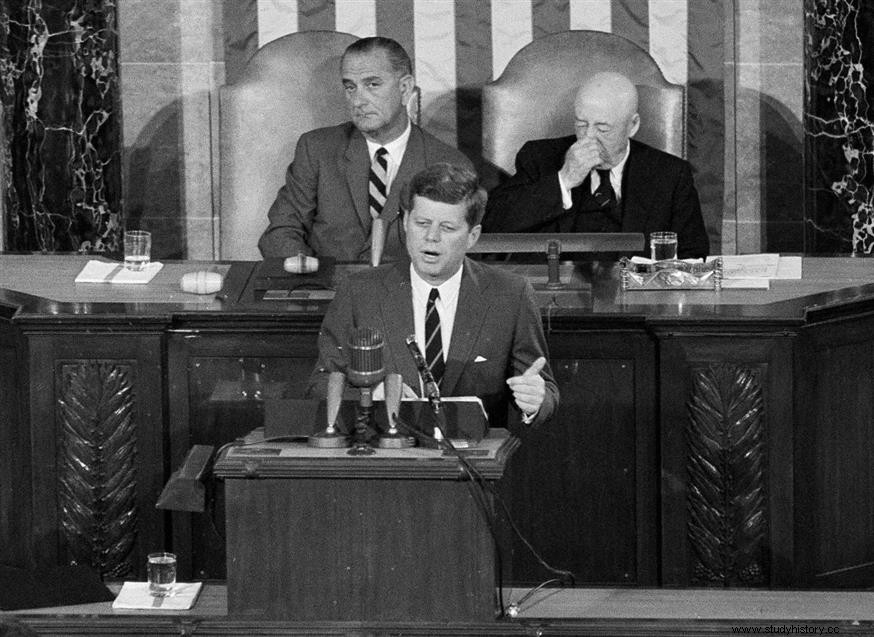 2. Kennedy didn't even care about the moon, but...
2. Kennedy didn't even care about the moon, but...
"Before the end of the decade, it will be possible for a man to go to the Moon and return safely to Earth", words of wisdom from the president of the USA John Kennedy but he didn't live to see them come true... And you see he didn't believe what JFK was saying, but as a politician he had to say something... Publicly, President John F. Kennedy had declared that the USA "will travel to this new sea because new knowledge must be acquired that will serve for the progress of all people". Big words…
Actually , Kennedy didn't even care about space and knowledge and human progress through it. Secret tapes revealed that the President's motivation was primarily to defeat the enemy, namely theSoviets . Space warfare took place during the Cold War , and therefore, Kennedy was more concerned about US world domination and less about landing on the moon. The Soviets had already surpassed the U.S. in being the first to reach space, and the President was desperate for a way to prove that the U.S. could be one step ahead of the Soviets.
The Kennedy , turned to Vice President Lydon Johnson , who had taken an early interest in space programs. Johnson even put it bluntly:"control of space means control of the world," so it's no surprise that his pitch to JFK was to send an American to the moon. And there were two! And the paradox? Kennedy saw Armstrong and Aldrin from… high up and Johnson from his house. Nixon take credit for the successful mission!
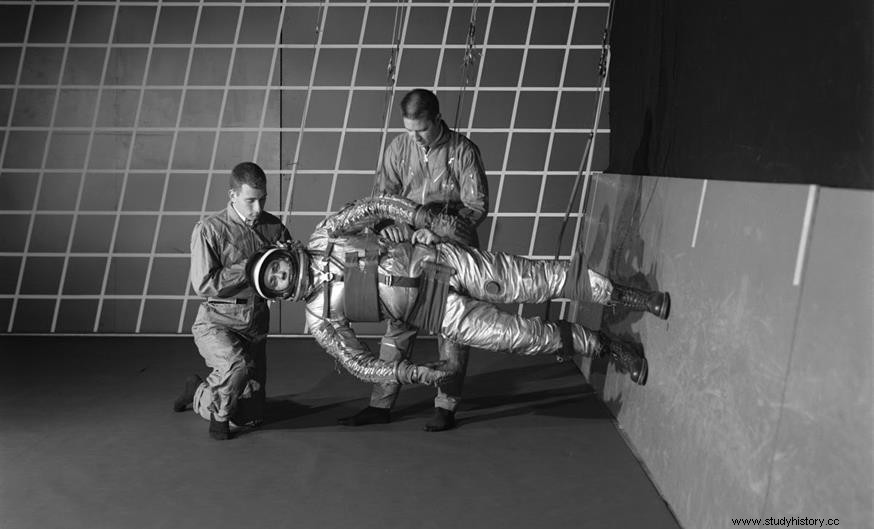 3. Training in.. oblique way
3. Training in.. oblique way
Education of the astronauts of the Apollo 11 spaceship involved in addition to the multi-day journey and the on-site exploration of a place that no one had ever visited. NASA it had to provide a wide range of training simulations to cover all possibilities. One of the most expedient training practices experienced by the astronauts was the takeoff and landing of the training vehicle in Houston.
A training practice , also, was walking in lower gravity , like the moon. Before NASA's first zero-gravity facility was built in 1966, early training required astronauts to levitate sideways:their feet would step and walk on vertical inclined walls. Sure the conditions weren't exactly the same, but with no other training method available, walking sideways was their best attempt to simulate the feeling of zero gravity.
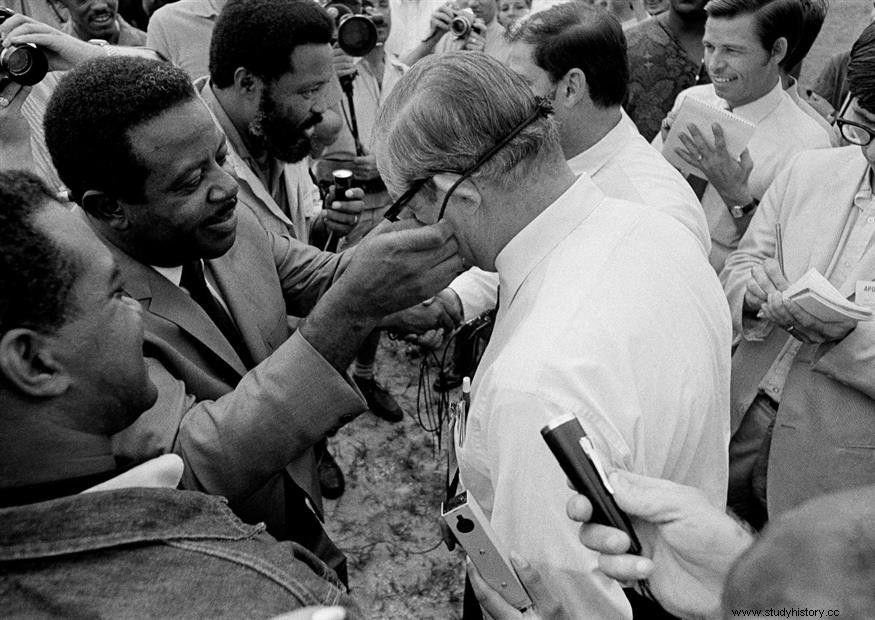 4. How the protesters were convinced not to protest and even got VIP
4. How the protesters were convinced not to protest and even got VIP
seats
The majority of US citizens applauded the effort to conquer space, but not everyone was thrilled with the decision to spend millions of dollars to send two or three, let alone five people to the moon. In fact, a group of activists gathered outside the Cape Kennedy Space Center to protest strongly. They also carried two mules with them, as well as a wooden wagon to show the stark contrast between the state-of-the-art spaceship with those who didn't even have the money to eat.
Thomas Paine , a NASA official, made contact with the protesters. His hope was that the activist leader, Ralph Abernathy , would "see the space program as an incentive for the US to tackle problems in other areas, using NASA's space successes as a measure of comparison and progress." After hours of talks with Abernathy, Payne was able to convince the group of protesters to stop protesting and arranged for them to each have a VIP seat to watch the launch. Paine was probably quite convincing:Abernathy and the team not only stopped the "voices", but prayed for the astronauts and at the end they declared that they were as proud as anyone of the achievement!
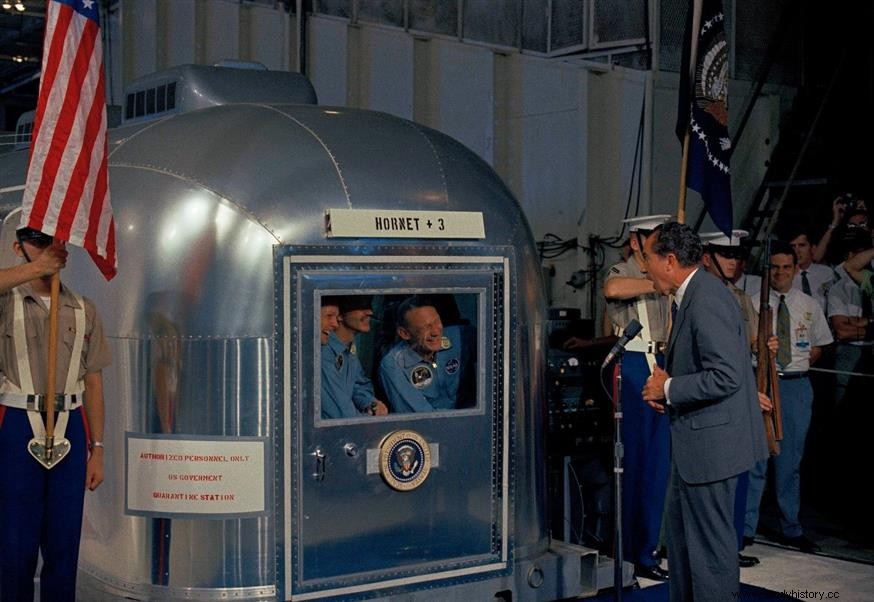 5. Scientists feared space germs
5. Scientists feared space germs
The Moon it was a completely unknown destination, and scientists weren't at all sure what kind of bacteria was there or what was going to be brought back to Earth after the astronauts returned. Any kind of deadly space virus could be carried to Earth by the travelers' suits. So, to prevent the spread of any space germs, the scientists came up with a plan:The re-entry capsule was beached in the Pacific Ocean on July 24, 1969, and the astronauts were immediately taken to an isolated laboratory at the Johnson Space Center for mandatory quarantine.
The three travelers of space were forced to stay there to avoid spreading any deadly space bacteria. Armstrong even celebrated his 39th birthday while in quarantine. They finally went home on August 10, 1969, almost a month after the launch (July 16) of the spaceship for the journey into the unknown.
And now we await the conquest of Mars …
